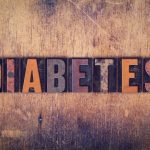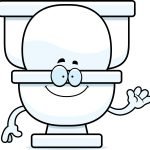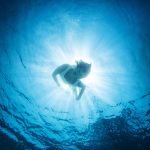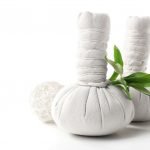A Century After the Spanish Flu
Sussanna Czeranko, ND, BBE
Nature Cure Clinical Pearls
The very old and the very young showed themselves, on the whole, less susceptible. – Dr Bernard Fantus, 1918, p.635
None are so blind as those who cannot see that the average mortality of influenza patients treated by homeopathic physicians was actually only about one-thirtieth of the average mortality reported by all physicians. – Dr William A. Pearson, 1919, p.11
The German aspirin has killed more people than the German bullets have. – Dr C. J. Loizeaux, Des Moines, ID, 1919, p.589
A century ago, the “Spanish Flu” decimated populations globally. Flu season 2018 is reminiscent of that event, already breaking records, so the claims go, with more North Americans than ever affected, according to media and announcements by the Centers for Disease Control and Prevention (CDC). The H3N2 virus strain has been reported by the CDC to cause severe symptoms that are potentially deadly, especially for vulnerable populations such as children and the elderly. What’s more, the reports add, the flu shot developed is showing signs of being less effective this year. Messages like these dominate the media, undermining health by spreading fear and worry among the public. However, is this any surprise? This pattern repeats every year, sounding the alarm that every man, woman, and child needs a flu shot.
CDC Fear Mongering
Fear of harm is the driving thrust implemented by the CDC and other health system authorities to ensure compliance with the annual flu shot ritual. The flu shot is the colloquial term; however, the CDC refers to it as “immunization,” which is a sanitization of its actual character, a “vaccination.” In this regard, Robert Kennedy reports, “Every year, the Centers for Disease Control and Prevention (CDC) and pharmaceutical companies mount an aggressive campaign in the mainstream media to persuade Americans to get their flu shots.” (Kennedy, 2018) Not surprisingly, “flu shots are big business: industry analysts estimate that within the next five years, the U.S. flu vaccine market will be worth almost $3 billion annually.” (Kennedy, 2018) Kennedy continues, “As pharmaceutical companies bombard American consumers with ubiquitous billboards, drugstore enticements and radio announcements to ‘get your flu shot now,’ the CDC has advised the industry to hike demand through the use of a ‘recipe’ of scare-mongering messaging.” (Kennedy, 2018)
The CDC’s strategy for fostering public interest and high vaccine demand was implemented by Glen Nowak, PhD, Associate Director for Communications at the CDC. In a PowerPoint presentation, he formulates the necessary steps required of medical experts and public health authorities to stress the danger of the flu and to urge the American population to get their flu shot. He cites the need to increase “visible/tangible examples of the seriousness of the illness (e.g., pictures of children, families of those affected coming forward) and people getting vaccinated (the first to motivate, the latter to reinforce).” (Nowak, 2015) The language used in the media is designed to evoke fear and terror. An example: “Ten more children have died of influenza in the United States this week, bringing the total to 63, federal health officials with the [CDC] said today in their weekly flu update. This flu season is shaping up to be a historically severe one with no end in sight.” (Brooks, 2018) Brooks, an MD who appears to be contributing to this fear generation, has posted many similar statements fueling the motivation needed to fill the queues at flu vaccination clinics and pharmacies. The increased number of billboards and signs this year in my own city, Portland, OR, suggests that we might be faced with a repeat epidemic such as the one Americans faced a century ago.
Scared to Death
Fear as a precipitating factor in the 1918 flu epidemic was noted by many who lived during its reign of terror. At the same time, there was a global war in full throttle, tearing apart families and ravaging Europe. Within this turmoil the broad spread of the Spanish Flu took an equally shocking toll. Shortly after this dreadful period, Crawford Green, MD, noted, “We saw many sad cases of influenza-phobia among adults, but the fear reached the children, too. In many cases when they were stricken with the disease, they were literally almost scared to death.” (Green, 1920, p.1103) Eli G. Jones, MD, commented that those who harbored fear were most likely to contract the flu. (Jones, 1918, p.553) A. H. Waterman, MD, noted, “As in all panics the emotion of fear seemed to kill judgment.” (Waterman, 1919, p.379)
This year marks the 100-year anniversary for the Spanish Flu that effectively terminated WWI and left, by some estimates, between 50 and 100 million dead. WWI was responsible for 9 million casualties. Concomitantly, the Spanish Flu left behind in its wake devastating and unequalled colossal collateral damage never before experienced in the world.
The symptoms accompanying a flu are malaise and fever. Both of these symptoms cause concern and often initiate a rapid response by a patient to treat these symptoms. Fear of fever is the compelling motivation. Infection or other pathologies accompanied by fever are often the most visible and the target for treatment. Dr André Saine outlines the historical controversies regarding the fever that still persist after centuries of discourse and debate. Naturopaths and early doctors responded to the presentation of fever in the spirit of the Hippocrates school, where fever was “often encouraged and celebrated, as it was seen as the most important of the body’s natural defenses.” (Saine, 2017, p.1) Saine chronicles the players who promoted “fever phobia” and who paved the way to view a fever “as injurious to health, and treatment with antipyretic medication came to be considered a necessity.” (Saine, 2017, p.2) The diverging views held by Homeopaths, Naturopaths, and Allopaths regarding the fever and its treatment were present on the world stage during the Spanish Flu of 1918. Different theories, approaches, and statistics reveal much when we look at the Spanish Flu, most particularly when we compare how this pandemic was respectively handled by these different groups.
Opium, Ipecac, and Aspirin
The standard of care established by the “regulars” included excessively large doses of aspirin, Dover’s powder, consisting of opium and ipecac, and a strengthening diet composed of large quantities of animal protein. No two treatments could be more diverging and opposite than the allopathic treatment protocols and those used by the Naturopaths and Homeopaths.
When we review the letters and testaments from Naturopaths reporting on their flu cases in Benedict Lust’s publications, we get a glimpse of what some of their methods entailed, and are soon reassured that flu epidemics are not destined to resolve in gravesites. Benedict Lust published many accounts from his colleagues in 1918 and the following year. There is a resounding message that Naturopaths had no trouble treating the Spanish Flu patient. In fact, their patients usually recovered. The typical death toll of the regular doctors was colossal; those documented by naturopathic doctors was significantly less. What stands out in naturopathic patient care outcomes during the Spanish Flu was the lack of drug intervention. Using hydrotherapies and fasting and hydrating patients – a reflection of respect for the fever’s role in the resolution of illness – was so effective that only about 1% of patients died under the care of a Naturopath.
Naturopathic Protocols
Lust published letters from practicing Naturopaths who treated influenza in 1918. One such letter from E. P. Kondis, ND, a practicing Naturopath from Waterbury, CT, who reported that he saw “58 patients [with the flu], of whom five developed pneumonia and no deaths.” (Kondis, 1919, p.44) Kondis outlined his treatment protocol, which relied upon hydrotherapy, dietary recommendations, and herbal remedies. He writes, “For fever, cold application to the head. Hot or cold applications to the body. Cold or hot drinks as lemonade, elder flowers or chamomile tea, etc. Enemas. Sponge bath. Gargle with common salt.” (Kondis, 1919, p.44) His treatment for pneumonia also used cold compresses to the head and chest, and hot applications applied to the feet. (Kondis, 1919, p.44) These treatments used by Kondis supported the patient’s own healing mechanisms, exhibited by the acute symptoms of the flu.
William Havard, a Naturopath, writes, “We cannot state too often nor too emphatically that acute diseases are forms of the reaction which the body makes to poisonous or irritating substances and are in themselves healing efforts of Nature.” (Havard, 1918, p.866) He continues,
All acute diseases are for this identical purpose, and will only occur in a body containing foreign substance. To endeavor in any manner to suppress the reaction would be working counter to Nature’s method of destroying and eliminating the trouble maker, and will either cause death or at the least serious impairment of organic function and lay the foundation for chronic disease. (Havard, 1918, p.866)
Havard strongly warns against some of the recommendations of the health boards who were so eager to suppress fever with gram-doses of aspirin. (Havard, 1918, p.865)
James C. Thomson, ND, DO, a Naturopath and Osteopath from Edinburgh, writes that he saw 87 influenza cases. His treatment protocol included…
the application of cold compresses to the kidneys; the compress was changed hourly. In individual cases, compresses were also applied to the throat, chest, etc., with occasional osteopathic attention. As to the diet, this was reduced while any symptoms of discomfort were present―usually two to three days complete fast followed by fruit and gradual return to normal. All recovered quite rapidly, usually in from five to seven days. (Thomson, 1919, p.100)
Thomson reports that he lost one patient whose “wife and family were very hostile to the Nature Cure treatment.” (Thomson, 1919, p.100) The man was given suppressive drug treatment and hospitalized, and died.
Homeopathic Successes
Homeopathic doctors practicing in 1918 offered patients a hope to survive the ravaging claws of the 1918 flu. Homeopaths saved hundreds of lives by following and trusting their homeopathic teachings. Dr Green writes, “The homeopathic physicians throughout the country were not following some empty fad or fancy that so frequently leads even homeopathists astray, but by the nature of things, were constrained to fall back upon the faith of their fathers, similia similibus currentur, and it served them well.” (Green, 1920, p.1102)
Dr William Pearson reports on a survey of Homeopaths who treated influenza, conducted by the Bureau of Homeopathy of the American Institute of Homeopathy in June 1919. Two-thousand Homeopaths were sent the questionnaire and all of the reports received were tabulated. The results indicated that 26 795 patients were treated by the 88 Homeopaths who replied to the survey, and the number of deaths totaled 273 – a 1.06% average mortality. (Pearson, 1919, p.11) The homeopathic success compared with the average mortality rate of 30% demonstrated that those fortunate enough to be treated by a Homeopath had a higher chance of survival.
Dr Edward Davis provided a list of hygienic and preventative measures of personal cleanliness. He writes, “Urge the importance of fresh air and the avoidance of chill and overheat. In fighting the epidemic give no medicine and use no treatment which may depress the vital forces, especially the heart of the patient.” (Davis, 1918, p.552)
Pearson reported on the nurses attending to the flu patients that were treated at the Hahnemann Hospital. All the nurses “were working day and night without any consideration for their own health, a total of 57 of them at different times had to finally go to bed, and a large proportion of these had influenza, but not a single one of them developed pneumonia.” (Pearson, 1919, p.13)
Dr. T. McCann of Dayton, OH, treated 1000 cases of influenza. He writes, “I have had no losses. I want no credit given me for these results.” (McCann, 1919, p.845) He continues, “Given an individual in a fair degree of health when stricken with this malady, there is no reasonable excuse for a homeopathic physician losing a single case.” (McCann, 1919, p.845)
Dr E. Jones, a Homeopath who practiced in Buffalo, NY, writes, “There is an epidemic of this disease [influenza] in Buffalo; from 75 to 100 deaths are reported within 24 hours.” (Jones, 1918, p.553) Like many of his homeopathic colleagues, Jones had considerable experience treating influenza epidemics and had never lost a case of influenza in nearly 50 years of practice. He writes, “[Influenza] is one of the easiest diseases to cure if a doctor knows his Materia Medica.” (Jones, 1918, p.553)
In his paper, which was published by 3 principle newspapers, he provides a few suggestions for treatment:
If you should have chilly spells, and your nose feels stuffed up, great thirst, very restless and feverish, put five drops Tincture Aconite in half a glass of water, take one teaspoonful every hour. Put your feet in hot water, as hot as you can bear it, keep them in the water for 15 minutes. Drink plenty of hot lemonade. (Jones, 1918, p.553)
Dr James W. Ward reports 100% recoveries in 182 patients and reveals the 3 most frequently used remedies:
Gelsemium 3x: Controlled the fatigue cases having chilliness, moderate fever, sneezing, watery nasal discharge. No thirst. Yawning. Drowsy but often sleepless. Deep-seated, dull aching in the limbs and joints. Banded feeling around head or occiput fullness.
Eupatorium 3x: Marked chill followed by fever 103° to 105° F/39° to 41° C. Pulsating frontal or occipital headache. Intense aching in back. Deep bone aching. Nausea. Vomiting. Larynx rough, scraping sensation producing cough. Oppression of chest with soreness.
Bryonia 1x: Much chilliness, frequently with heat in head. Flushed face and much thirst. Heat more internal. Transient sweats of single parts. Dry cough which yields to blood specked expectoration. Constriction of chest and pressure on sternum. The symptoms all aggravated by motion… Desire to but unable to take deep breath. (Ward, 1919, p.856)
Dr Dudley Williams reports that fellow Homeopaths practicing in Rhode Island “found very little variation in the remedial treatment of influenza. Arsenic, bryonia, eupatorium perfoliatum, baptisia, and gelsemium seem to be in pretty general use, and the opinion was that if the case was seen early enough it seldom ran into pneumonia.” (Williams, 1919, p.1003) Dr Harry Baker, of Richmond, VA, dubbed “gelsemium as the genus epidemicus and covered 95% of the cases.” (Baker, 1919, p.682) McCann cites his 4 remedies that covered uncomplicated cases as “gelsemium, bryonia, eupatorium and arsenicum.” (McCann, 1919, p.845)
The complications arising from allopathic care often prolonged recovery or else, sadly, compounded the virulence of the bacterial infection and escalated high levels of fatalities. The indiscriminate use and reliance upon “salicyclates, including aspirin and quinine were almost [Allopathy’s] sole stand-bys.” (Williams, 1919, p.1003) We now know that the aspirin dosages during the Spanish Flu exceeded safe levels. “On 5 October 1918, The Journal of the American Medical Association recommended aspirin: ‘The acetylsalicylic acid may be given in a dosage of 1 gm. (15 grains) every three hours…or a smaller dose combined with 0.1 gm. (2 grains) acetophenetidin, until symptomatic relief is secured’ (p 1137). These recommended doses (1000–1300 mg), with frequencies ranging from hourly to every 3 hours, resulting in daily doses of 8–31.2 grams, are above the maximum safe dose.” (Starko, 2009, p.1407) Dr W. A. Dewey of Ann Arbor, MI, witnessed cases of “pulmonary edema suddenly brought on by aspirin.” (Dewey, 1919, p.1005) “Cases overdosed with aspirin have most all required sulph. in high potency.” (Gier, 1919, p.1100)
Dr Charleton Harkness of Chicago, IL, was one of the medical doctors stationed at Camp Lee with 60 000 recruits. He writes, “About 15,000 cases passed through the Base Hospital and … there were between 700 and 800 deaths.” (Harkness, 1919, p.587) Harkness did not use aspirin and did not have access to his homeopathic remedies. He relied upon a few tinctures in his possession, such as gelsemium that he diluted. “I had 13 deaths in the six weeks, and was complimented by my chief medical officer as having the lowest death rate in the hospital.” (Harkness, 1919, p.587) The effects of aspirin were noted and discontinued in this particular hospital, causing a huge decline in the death rate. (Harkness, 1919, p.588)
Liquid Diet
Homeopaths also made dietary recommendations consisting principally of fasting or liquids. Green comments, “The dietetic treatment of influenza is of great importance. I know of no disease, not even typhoid, in which a strictly liquid diet is of more importance.” (Green, 1920, p.1102) McCann prescribed an egg white with orange juice every 3 hours for the first 2 days, adding a vegetarian diet of fruits, vegetables, and some cereals. Dr J. Johnson of Michigan put patients on “a strict diet [keeping] the patient in bed and not allowed to sit up until about two days after the fever was gone.” (Johnson, 1919, p.1097)
Lessons Lost
With the remarkable success that Homeopaths had during the 1918 Spanish Flu epidemic, it is puzzling and even incomprehensible that during the ensuing century, Homeopathy – with all of its journals, schools, hospitals and MD-trained Homeopaths – would vanish from the healthcare terrain. In the April 1919 issue of the Journal of the American Institute of Homeopathy, a notice posted by the Bureau of Census appeared, announcing, “A Joint Influenza Committee has been created to study the epidemic and to make comparable, so far as possible, the influenza data gathered by the Government departments.” (1919, p.1190) This census, comparing the treatments and outcomes of Homeopaths and Allopaths, was never published.
Today, we have the luxury of hindsight to see that aspirin was prescribed in toxic doses, resulting in hiking the mortality rate of pulmonary edema and pneumonia. The reliance upon pharmaceuticals has not lessened but rather has increased over the past century. Will we one day find ourselves scratching our heads and mumbling, “What were the scientific doctors thinking?” Dr Andrews of West Virginia saw the correlation between a common allopathic vaccine, antipyrin, and the increased incidence of pneumonia and fatalities in the 1889 flu epidemic. Thirty years later, the same pattern repeats with aspirin use and pneumonia and fatalities. (Andrews, 1918, p.720) There is a French expression which captures this sad outcome: “Plus cela change, plus c’est toujours le même chose.”
References:
Andrews, W. R. (1919). Influenza: A Notable Success Among the West Virginia Hills. The Journal of the American Institute of Homeopathy, Chicago, January, XI (7), 718-720.
Baker, H. B. (1918). Clinical Comment on Influenza. The Journal of the American Institute of Homeopathy, Chicago, December, XI (6), 682-684.
Brooks, M. (2018). Flu Season as Intense as 2009 Pandemic. Medscape Medical News, February 9, 2018. Available at: https://www.medscape.com/viewarticle/892503. Accessed February 15, 2018.
Davis, E. P. (1918). Influenza Epidemic: Action of the Volunteer Medical Service Corps. The Journal of the American Institute of Homeopathy, Chicago, November, XI (5), 551-552.
Dewey, W. A. (1919). Influenza: Brief Comments. The Journal of the American Institute of Homeopathy, Chicago, March, XI (9), 1003-1005.
Fantus, B. (1918). Influenza Notes. Pacific Coast Journal Homeopathy, XXIX (10), 635.
Gier, W. J. (1919). Influenza: A Clinical Report from Kansas. The Journal of the American Institute of Homeopathy, Chicago, April, XI (10), 1099-1100.
Green, C. R. (1920). The Treatment of Influenza in Children. Journal of the American Institute of Homeopathy, May, XII (11), 1102-1112.
Harkness, C. (1919). Influenza: A Favorable Mortality and Publicity—Discussion. The Journal of the American Institute of Homeopathy, Chicago, December, XII (6), 587-600.
Havard, W. F. (1918). Editorial, Influenza, Immunization. Herald of Health and Naturopath, XXIII (11), 865-867.
Johnson, J. A. Wm. (1919). Influenza: Grave Sequelae. The Journal of the American Institute of Homeopathy, Chicago, April, XI (10), 1096-1099.
Jones, E. G. (1918). Treatment of Influenza. The Homeopathic Recorder, Lancaster, PA, XXXIII (12), 553-555.
Kennedy, R. F. (2018). Report: CDC Utilizes Fear-Mongering to Sell Vaccines. World Mercury Project, January 29, 2018. Available at: https://www.infowars.com/report-cdc-utilizes-fear-mongering-to-sell-vaccines/. Accessed February 15, 2018.
Kondis, E. P. (1919). Letter to the Editor. Herald of Health and Naturopath, XXIV (1), 44.
Loizeaux, C. J. (1919). Influenza: A Favorable Mortality and Publicity—Discussion. The Journal of the American Institute of Homeopathy, Chicago, December, XII (6), 587-600.
McCann, T. A. (1919). Influenza: brief comment. The Journal of the American Institute of Homeopathy, Chicago, February, XI (8), 845-848.
Nowak, G. (2015). Increasing Awareness and Uptake of Influenza Immunization. [PowerPoint presentation] Available at:http://nationalacademies.org/hmd/~/media/Files/Activity%20Files/PublicHealth/MicrobialThreats/Nowak.pdf. Accessed February 15, 2018.
Pearson, W. A. (1919). Epidemic Influenza Treated by Homeopathic Physicians. The Journal of the American Institute of Homeopathy, Chicago, XII (1), 11-13.
Thomson, J. C. (1919). Letter to the Editor. Herald of Health and Naturopath, XXIV (2), 100.
Ward, J. W. Influenza. The Journal of the American Institute of Homeopathy, Chicago, XI (8), 856. (Originally appeared in Pacific Coast Journal of Homeopathy, December, 1918.)Waterman, A. H. (1919). Clinical Diagnosis of Pneumonia. The Journal of the American Institute of Homeopathy, Chicago, XII (4), 379-383.
Williams, D. A. (1919). Influenza: Brief Comments. The Journal of the American Institute of Homeopathy, Chicago, XI (9), 1003-1005.
Image Copyright: <a href=’https://www.123rf.com/profile_juangaertner’>juangaertner / 123RF Stock Photo</a>
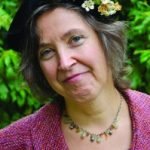 Sussanna Czeranko, ND, BBE, a graduate of CCNM, is a licensed ND in Oregon. Sussanna is a frequent presenter, nationally and internationally. As Curator of the Rare Books Collection at NUNM, she is the author of The Hevert Collection, a 12-book series about naturopathic medicine, the ninth volume of which is now complete, Mental Culture in Naturopathic Medicine. Sussanna founded The Breathing Academy, a training institute for naturopathic doctors to incorporate a scientific model of breathing therapy called Buteyko into their practice. Her next large project is to complete the development of her new medical spa in Manitou Beach, Saskatchewan – Manitou Waters Centre. She is the co-founder of the International Congress on Naturopathic Medicine and the inaugural conference chair of the Healing Skies Naturopathic Medicine Conference, in Saskatchewan.
Sussanna Czeranko, ND, BBE, a graduate of CCNM, is a licensed ND in Oregon. Sussanna is a frequent presenter, nationally and internationally. As Curator of the Rare Books Collection at NUNM, she is the author of The Hevert Collection, a 12-book series about naturopathic medicine, the ninth volume of which is now complete, Mental Culture in Naturopathic Medicine. Sussanna founded The Breathing Academy, a training institute for naturopathic doctors to incorporate a scientific model of breathing therapy called Buteyko into their practice. Her next large project is to complete the development of her new medical spa in Manitou Beach, Saskatchewan – Manitou Waters Centre. She is the co-founder of the International Congress on Naturopathic Medicine and the inaugural conference chair of the Healing Skies Naturopathic Medicine Conference, in Saskatchewan.




